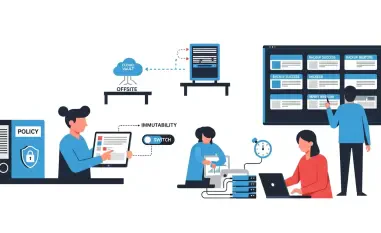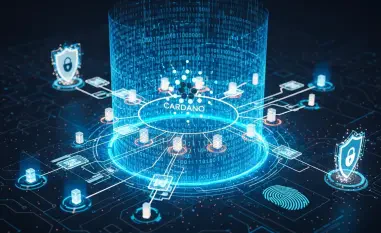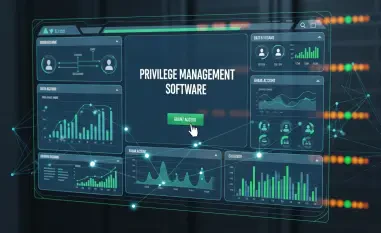The alarming rise of Account Takeover (ATO) attacks has become a critical concern in today’s digital age, posing a significant challenge to cybersecurity experts and organizations alike. These cyber threats have surged by an astonishing 71% recently, impacting diverse groups—from everyday internet users to high-profile figures like politicians and global journalists. The extent of this menace is further amplified by its infiltration into burgeoning industries such as cryptocurrency, where proprietary information and financial assets are particularly vulnerable. The potent combination of stolen credentials and brute-force tactics makes ATO attacks a formidable threat. Cybercriminals exploit already breached passwords and weak credentials, employing a variety of malicious techniques to gain unauthorized access. Attackers often initiate these breaches by obtaining login credentials through targeted attacks or large-scale data breaches, threatening the security of sensitive data across networks and platforms.
Understanding the Mechanics of Account Takeover Attacks
Current cybercriminal tactics increasingly involve sophisticated methods such as credential stuffing, leveraging automated tools to test a vast array of stolen username-password combinations across multiple websites and services. The effectiveness of this approach is largely due to a widespread tendency among users to reuse passwords across various platforms, a practice that inadvertently furnishes attackers with opportunities for unauthorized access. Additionally, phishing and social engineering have become integral to their strategies, employing deceptive emails, fake login pages, and misleading SMS messages designed to trick victims into divulging sensitive information. These deceptive techniques often succeed in extracting information that opens the door to lateral movements within digital infrastructures. Once inside, attackers can discreetly access deeper layers of data, posing considerable challenges to conventional security systems tasked with detecting such intrusions. This facet of ATO attacks underscores the need for enhanced vigilance and technological solutions geared toward prevention and immediate response.
Importance of Strong Password Practices and Multi-Factor Authentication
A pivotal measure in countering ATO attacks is the adoption of robust password practices and multi-factor authentication (MFA). Generating unique, complex passwords for each account is crucial in minimizing the impact should a set of credentials become compromised, effectively insulating additional accounts from hacking attempts. Moreover, organizations are encouraged to implement MFA across all networks and systems, drastically reducing the likelihood of successful ATO incidents, even with compromised passwords. Vigilant monitoring of security events is equally imperative. Recognizing irregular login attempts or atypical patterns can serve as early indicators of potential ATO efforts, allowing for prompt intervention. To bolster this strategy, advanced monitoring tools like Security Information and Event Management (SIEM) systems are integral, providing the necessary capabilities to detect anomalies and formulate swift, appropriate responses to potential threats.
Enhancing Security Through Technology and Audits
Password managers play a valuable role in facilitating the development and secure storage of complex passwords, alleviating the burden on users and helping maintain high-security standards. These tools mitigate the risk associated with insecure practices such as writing down passwords or relying solely on memory, ensuring strong password security protocols are upheld. To further fortify defenses against evolving cyber threats, periodic security audits and penetration testing are essential. Organizations are advised to actively identify and resolve system vulnerabilities, preemptively addressing weaknesses that could be exploited by attackers. These proactive assessments enable companies to adapt to the dynamic cybersecurity landscape, reinforcing their defenses against potential ATO threats. Such measures, combined with advanced technological solutions and vigilant monitoring, contribute to building a robust security infrastructure capable of thwarting the sophisticated techniques employed by modern cybercriminals.
Role of Education, User Training, and Specialized Solutions
Education and training for users are fundamental components in preventing ATO attacks, emphasizing the need for proactive setup of MFA for both personal and professional accounts. Users must remain informed about emerging cybersecurity threats and adopt best practices, such as identifying phishing attempts and recognizing social engineering tactics. Mitigating risks associated with human error is crucial to strengthening overall security postures. Focus must also be placed on specialized solutions offered by companies dedicated to fortifying security infrastructures. Notably, solutions like Specops Secure Access and Specops Password Policy provide additional layers of protection, reducing the risk of ATO attacks through MFA and strong password requirements. These systems enable organizations to proactively detect compromised passwords within Active Directory, facilitating the construction of resilient defenses against unauthorized access. By integrating such specialized solutions, entities can significantly enhance their security measures, ensuring a comprehensive safeguard against the ever-present threat of ATO breaches.
Building a Protective Framework Against Emerging Threats
Cybercriminals are increasingly using sophisticated tactics like credential stuffing, which involves utilizing automated tools to test stolen username-password combinations across numerous websites and services. This method proves highly effective largely because many users tend to recycle passwords across various platforms, inadvertently granting hackers easy access for unauthorized entry. Moreover, phishing and social engineering have become crucial components of their strategies, exploiting deceptive emails, fake login pages, and misleading SMS messages to entice victims into releasing sensitive information. These tactics frequently succeed in obtaining data that allows attackers to move laterally within digital infrastructures. Once inside, they can surreptitiously reach deeper levels of data, posing significant challenges to conventional security systems assigned with detecting these breaches. This aspect of account takeover attacks highlights the urgent need for improved vigilance and technological solutions aimed at prevention and swift response to security breaches.













